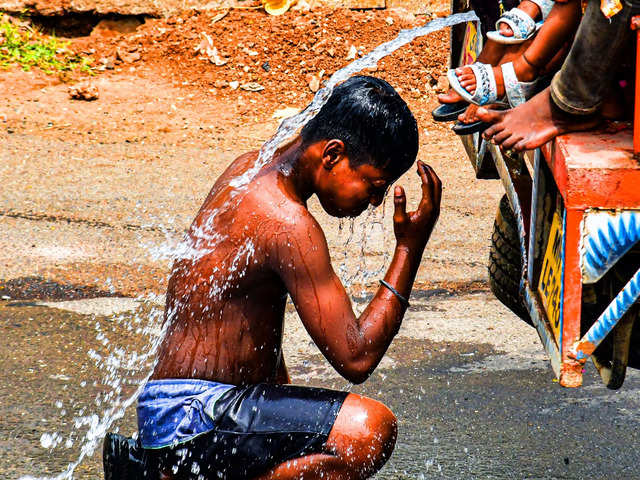
While taking a dig at a rival brand makes brands catch a lot of eyeballs, brand experts feel that the strategy comes wi...
Sep 6, 2019, 14:30 IST
Advertising
Does Competitive Marketing Still Work For Brands?
Sep 6, 2019, 14:30 IST
While taking a dig at a rival brand makes brands catch a lot of eyeballs, brand experts feel that the strategy comes wi...
Recently, Society Tea launched a new campaign ‘Masala Nahi Toh Mazaa Nahi’. Conceptualized by Ogilvy, the campaign revolves around every Indian’s love for cinema and chai. Riding on the strategy of this campaign, Shemaroo Entertainment tactically took over a Society Tea outdoor in Mumbai with a campaign of its own. The Shemaroo Outdoor goes on to agree with Society Tea outdoor to say, ‘Toh masala chai ke saath ek masala movie ho jaye?’.
While this campaign between Society and Shemaroo was more like a friendly reply, there have many numerous instances where brands have taken on each other.Mercedes-Benz CEO Dieter Zetsche retired from his post recently, after leading the car manufacturer for 12 years. And while the world spoke about Zetsche’s stepping down, an ad spot by BMW, paying tribute to Zetsche went viral.
BMW released a video, bidding farewell to Zetsche, which people might argue is a very nice gesture. The ‘heartwarming’ ad sports a Zetsche look-alike who is seen saying goodbye to colleagues at Mercedes-Benz, returning his ID and then seen leaving for home. The ad ends by saying, ‘Thank you, Dieter Zetsche, for so many years of inspiring competition.’ However, BMW brilliantly adds itself to the spot when they show the character zooming off in a BMW car with the words ‘Free at last’ on the screen, in the last frame seconds of the ad.
The ad ticked all the right boxes, it felt like a genuinely heartfelt tribute, while also being smart advertising. However, while people initially lauded BMW for being humble and raising a toast to the CEO of a rival brand, many others later pointed out that the last shot, where Zetsche is seen driving out in a flashy BMW car makes the ad cheeky and not really as heartfelt as most people were making it out to be.
Competitive marketing isn’t really a new phenomenon. For years, rival brands have engaged in guerilla advertising, calling each other out and pulling each other down, in an attempt at achieving one-upmanship. For consumers, it is entertainment, where competing brands end up engaging in pun wars, which can be very witty at most times.
Closer home, we came across a few examples of competitive marketing when smartphone manufacturer Xiaomi took a dig at rival brand OnePlus. OnePlus has been putting in some big bucks to promote its latest offering OnePlus 7. It recently roped in Hollywood actor Robert Downey Junior as its face and has been marketing its new phone aggressively. Looking at this as an opportunity, Xiaomi came up with an OOH campaign and placed it right beside OnePlus hoardings with the punchline, ‘Starkly Superior To The Lastest One’, clearly taking a dig at OnePlus. The images were tweeted by Xiaomi India Head, Manu Kumar Jain, and the Twitterverse was quick to notice this, which were shared across platforms widely.
About a month back, Oven Story came up with a series of videos where they promoted their pizza offerings while also poking fun at some of its well-established rivals like Pizza Hut and Domino’s.
European lager beer brand Beck’s Ice too launched a digital film that took a direct dig at competitor Kingfisher, the ad implied that its competitor’s beer was not as smooth as Beck’s Ice.Burger King recently also took its competitive advertising to a different level when it launched an Augmented Reality campaign where it asked people to ‘burn’ its competitor’s ads, and get a Whopper in exchange.
In the past too, we have seen some big brands engaging in competitive marketing. Who can forget the Cola wars in India in the 90’s? Or the campaign where Times of India came out with a video, pulling the Hindu down while launching in Chennai, which was dominated by the Hindu. The Hindu also later came out with a campaign titled, ‘Stay Ahead With The Hindu’. Both the campaigns were widely spoken about, despite it being before the time of social media.
Competitive marketing has an obvious advantage. It makes people sit up and notice. In the age of social media, anything that is a little different from regular communications generates a lot of chatter. Speaking about how brands can stand to gain,Saurabh Uboweja Chief Executive Officer Brands of Desire management consulting firm says, “Competitive marketing is a powerful tool if used intelligently. It brings unforced attention, creates dialogue around your brand and establishes your superiority over your adversary.”
Since the advent of social media, coming up with campaigns like this has also become common because a lot can be said in just one post. This also makes it cost-effective. Says N Chandramouli, CEO, TRA, “Guerrilla marketing or competitive advertising is usually low cost and usually piggybacks on a larger advertising campaign. It’s like a judo move, where you use the weight of the opponent against them. It becomes good conversation, and is usually remembered for a long time.”
He further adds, “If done well, ads like this can be extremely effective. It brings the competing brand into the consumer consciousness, if it is well executed.”
However, many also believe it is a double edged sword. Adds Uboweja, “It is sometimes confused with plain or crass sloganeering and may backfire as a result, making a brand appear desperate for attention.”
Agreeing to Uboweja, Karthik Srinivasan, Independent Brand Strategist says, “Brands need to be very careful while coming up with campaigns like this. Campaigns go viral when they evoke a strong emotion in viewers, that emotion can be positive, negative, humor or disgust.”
Sharing an example when two brands engaged in competitive advertising, while not putting each other down, Srinivasan says, “When Boeing turned 100 back in 2016, Airbus came up with a video thanking the former for the healthy competition. Similarly, Boeing came up with a video to wish Airbus a happy 50th birthday. In both the cases, the brands kept the snide-ness at the minimal. However, that also meant these videos were not as widely shared as the others.”
While brands do capture a lot of eyeballs for campaigns like these, they can also face a backlash, making it critical for brands to be very careful. Srinivasan explains, “People only share content like this when they feel strongly. And it’s not a very good idea to do that on a back of a strong negative emotion. In case of Xiaomi, they pulled OnePlus’ legs but the next time they fall short in some regard, people will pull Xiaomi down too. Brand need to realize that a piece of communication can also evoke a positive emotion and such creatives can also do well with consumers, if the campaigns are executed well.”
While this campaign between Society and Shemaroo was more like a friendly reply, there have many numerous instances where brands have taken on each other.
BMW released a video, bidding farewell to Zetsche, which people might argue is a very nice gesture. The ‘heartwarming’ ad sports a Zetsche look-alike who is seen saying goodbye to colleagues at Mercedes-Benz, returning his ID and then seen leaving for home. The ad ends by saying, ‘Thank you, Dieter Zetsche, for so many years of inspiring competition.’ However, BMW brilliantly adds itself to the spot when they show the character zooming off in a BMW car with the words ‘Free at last’ on the screen, in the last frame seconds of the ad.
The ad ticked all the right boxes, it felt like a genuinely heartfelt tribute, while also being smart advertising. However, while people initially lauded BMW for being humble and raising a toast to the CEO of a rival brand, many others later pointed out that the last shot, where Zetsche is seen driving out in a flashy BMW car makes the ad cheeky and not really as heartfelt as most people were making it out to be.
Closer home, we came across a few examples of competitive marketing when smartphone manufacturer Xiaomi took a dig at rival brand OnePlus. OnePlus has been putting in some big bucks to promote its latest offering OnePlus 7. It recently roped in Hollywood actor Robert Downey Junior as its face and has been marketing its new phone aggressively. Looking at this as an opportunity, Xiaomi came up with an OOH campaign and placed it right beside OnePlus hoardings with the punchline, ‘Starkly Superior To The Lastest One’, clearly taking a dig at OnePlus. The images were tweeted by Xiaomi India Head, Manu Kumar Jain, and the Twitterverse was quick to notice this, which were shared across platforms widely.
"Starkly superior to the latest one!" +1 if you liked these punny ads! ���� #RedmiK20 and #RedmiK20Pro coming soon!… https://t.co/EVejqmkGRW
— Manu Kumar Jain (@manukumarjain) 1559458989000About a month back, Oven Story came up with a series of videos where they promoted their pizza offerings while also poking fun at some of its well-established rivals like Pizza Hut and Domino’s.
European lager beer brand Beck’s Ice too launched a digital film that took a direct dig at competitor Kingfisher, the ad implied that its competitor’s beer was not as smooth as Beck’s Ice.
Title: Burn That Ad Client: Burger King Agency: @DAVID_SaoPaulo_ For their latest campaign, Burger King entices cu… https://t.co/HZSysvXWMs
— Ogilvy (@Ogilvy) 1553090752000In the past too, we have seen some big brands engaging in competitive marketing. Who can forget the Cola wars in India in the 90’s? Or the campaign where Times of India came out with a video, pulling the Hindu down while launching in Chennai, which was dominated by the Hindu. The Hindu also later came out with a campaign titled, ‘Stay Ahead With The Hindu’. Both the campaigns were widely spoken about, despite it being before the time of social media.
Competitive marketing has an obvious advantage. It makes people sit up and notice. In the age of social media, anything that is a little different from regular communications generates a lot of chatter. Speaking about how brands can stand to gain,
Since the advent of social media, coming up with campaigns like this has also become common because a lot can be said in just one post. This also makes it cost-effective. Says N Chandramouli, CEO, TRA, “Guerrilla marketing or competitive advertising is usually low cost and usually piggybacks on a larger advertising campaign. It’s like a judo move, where you use the weight of the opponent against them. It becomes good conversation, and is usually remembered for a long time.”
He further adds, “If done well, ads like this can be extremely effective. It brings the competing brand into the consumer consciousness, if it is well executed.”
However, many also believe it is a double edged sword. Adds Uboweja, “It is sometimes confused with plain or crass sloganeering and may backfire as a result, making a brand appear desperate for attention.”
Agreeing to Uboweja, Karthik Srinivasan, Independent Brand Strategist says, “Brands need to be very careful while coming up with campaigns like this. Campaigns go viral when they evoke a strong emotion in viewers, that emotion can be positive, negative, humor or disgust.”
Sharing an example when two brands engaged in competitive advertising, while not putting each other down, Srinivasan says, “When Boeing turned 100 back in 2016, Airbus came up with a video thanking the former for the healthy competition. Similarly, Boeing came up with a video to wish Airbus a happy 50th birthday. In both the cases, the brands kept the snide-ness at the minimal. However, that also meant these videos were not as widely shared as the others.”
While brands do capture a lot of eyeballs for campaigns like these, they can also face a backlash, making it critical for brands to be very careful. Srinivasan explains, “People only share content like this when they feel strongly. And it’s not a very good idea to do that on a back of a strong negative emotion. In case of Xiaomi, they pulled OnePlus’ legs but the next time they fall short in some regard, people will pull Xiaomi down too. Brand need to realize that a piece of communication can also evoke a positive emotion and such creatives can also do well with consumers, if the campaigns are executed well.”
INSIDER INTELLIGENCE REPORTS







